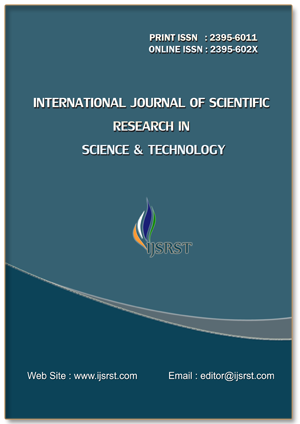Latent Fingerprint Development Using Pistachio Shell Fly Ash on a Non-Porous Surface
DOI:
https://doi.org/10.32628/IJSRST251222687Keywords:
Latent fingerprints, Pistachio shell fly ash, Non-porous surfaces, Eco-friendly fingerprint powderAbstract
Latent fingerprints are essential to forensic investigations, especially when it comes to identifying people at crime scenes. It is still difficult to create cost-effective, environmentally responsible, and efficient techniques for latent fingerprint visualisation on non-porous surfaces. This work investigates the creation of a unique powder for latent fingerprint formation using fly ash from pistachio shells, a naturally occurring and plentiful waste item. To evaluate its particle size, shape, and chemical characteristics, the fly ash from pistachio shells was prepared by burning, crushing, and analysing it using analytical methods. The material's suitability for visualising fingerprints was assessed using a variety of deposition processes on non-porous surfaces, such as glass, Switch box, White board, Mobile back cover and Table. The generated fingerprints were examined for contrast, ridge detail retention, and clarity in both visible and UV light. The findings showed that the fly ash from pistachio shells applies well to perspiration & oil residues in latent fingerprints, producing various and intricate ridge patterns. When compared to fingerprint powders that are sold commercially, its performance showed similar or better outcomes under specific circumstances. For forensic purposes, pistachio shell fly ash is a commonly available, affordable, and friendly to the environment alternative for latent fingerprint development. This study not only advances forensic methods but also shows how agro-waste products can advance environmental sustainability and forensic science.
📊 Article Downloads
References
Cucè, P., Polimeni, G., Lazzaro, A. P., & De Fulvio, G. (2004). The use of small particle reagents are useful in identifying wet latent fingerprints. S7–S8 in 146S(1), Forensic Science International. https://doi.org/10.1016/j.forsciint.2004.09.005
Ringrose Pitak, S., Kablang, P., & Suwansamrith, W. (2009). identification of latent fingerprints on wet, non-porous surfaces using different SPR formulas. 34(2), pp. 59–70, Chulalongkorn University Journal of Scientific Research.
Pope, H., Miskelly, G. M., and McDonald, D. (2008). How latent finger mark evidence is affected by hydrogen chloride and chlorine Forensic Science International, 179(1), 70–77. The article http://doi.org/10.1016/j.forsciint.2008.04.017
Sari, S. A., Jasmidi, Kembaren, A., Ningsih, H., & Mahat, N. A. (2019). gambir powder's creation as an affordable, environmentally friendly fingerprint powder for forensic uses. Proceedings of the 2155th AIP Conference, 020023. 10.1063/1.5125527
Vadivel, R., Anbukumaran, K., & Nirmala, M. (2021). frequently accessible, everyday substances as unconventional powders for latent fingerprint visualisation. 24(100339) Forensic Chemistry https://doi.org/10.1016/j.forc.2021.100339
In 2001, B.S. Nabar. Crime investigation using forensic science. In B.S. Nabar, Crime Investigation Using Forensic Science (P. 398). Bangalore.
Downloads
Published
Issue
Section
License
Copyright (c) 2025 International Journal of Scientific Research in Science and Technology

This work is licensed under a Creative Commons Attribution 4.0 International License.
https://creativecommons.org/licenses/by/4.0




